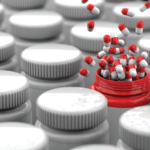Patents Pro Bono Publico
Patents were created with two important goals. The first was to stimulate interest in research and find solutions to problems. The second was to protect the interests of the people. The duration of time designated for exclusive use of a new technology or approach was intended to be limited. The innovation would then enter the public domain, for the benefit of all. The granting of a patent was designed to advance the interests of both the inventor and the public.
How can patent laws be improved to ensure both of these goals are met? Priti Krishtel, JD, is the founder and an executive director of the Initiative for Medicines, Access & Knowledge (I-MAK), a nonprofit organization that addresses structural inequities in how medicines are developed and distributed. She suggests the following reforms:13
- Raise the bar for awarding patents. We hand out patents worth billions of dollars for trivial changes in drugs. That’s like awarding a second Pulitzer prize for the second edition of a previously published book. Patents should be awarded only for truly innovative products that serve an important public need;
- Amend incentives for the U.S. Patent and Trademark Office. The Patent Office’s budget depends on fees it collects for patent review, which provides an incentive to move quickly. Providing the Patent Office with an alternate revenue stream would help ensure it provides each patent application with the careful consideration it deserves;
- Create a role for public participation: Public advocates should be allowed to participate in discussions regarding which drugs are worthy of being granted a patent;
- Expand legal standing to initiate lawsuits. Once a patent has been awarded, only another manufacturer with a financial interest in that patent has standing to challenge the patent in court. Patient advocates should be empowered to challenge inappropriate patents; and
- Create a public advocate to monitor the activities of the Patent Office and report to Congress to ensure its activities continue to serve the public interest.
Robin Feldman, professor of law and director of the Center for Innovation at UC Hastings College of the Law, San Francisco, argues for a one-and-done approach to drug patents:14
I believe that one period of protection should be enough. We should make the legal changes necessary to prevent companies from building patent walls and piling up mountains of rights. This could be accomplished by a ‘one-and-done’ approach for patent protection. Under it, a drug would receive just one period of exclusivity, and no more. The choice of which ‘one’ could be left entirely in the hands of the pharmaceutical company, with the election made when the FDA approves the drug. … The result, however, is that a pharmaceutical company chooses whether its period of exclusivity would be a patent, an orphan drug designation, a period of data exclusivity (in which no generic is allowed to use the original drug’s safety and effectiveness data), or something else—but not all of the above and more.
At the heart of these suggestions is the desire to return patent law to its roots and to ensure that it functions pro bono.

